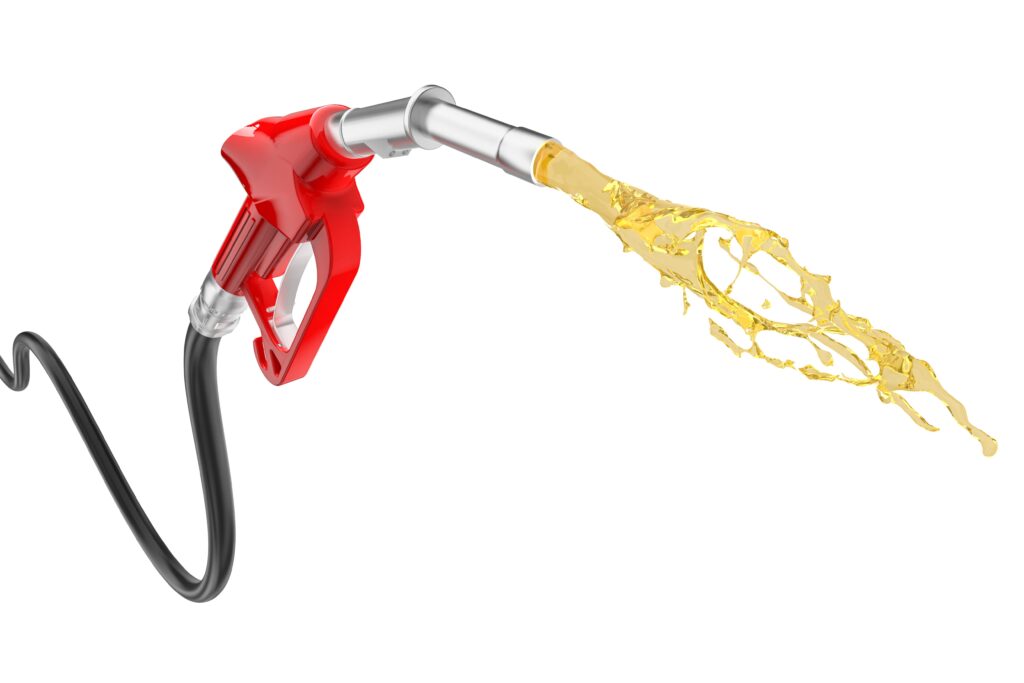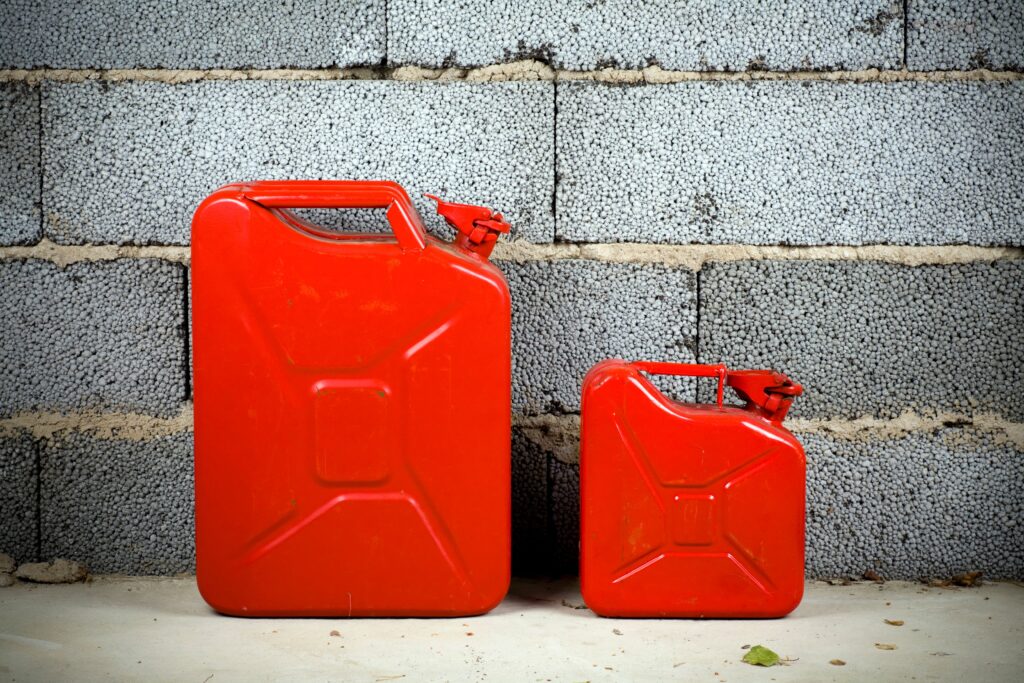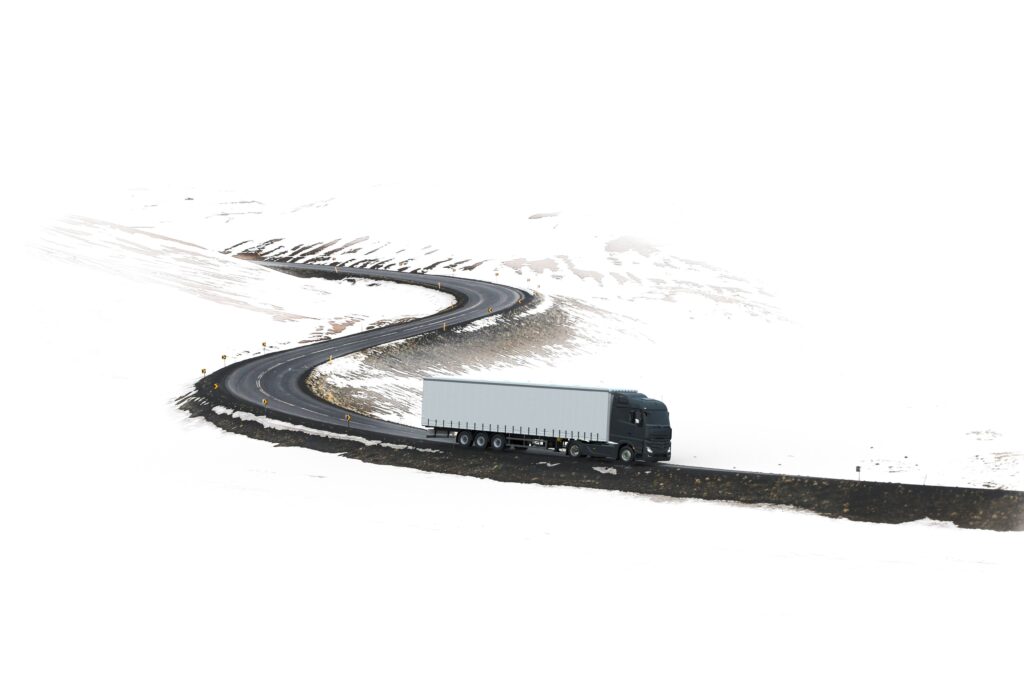Understanding Diesel Fuel Gelling

Diesel fuel gelling can be a real headache, especially during the frosty winter months. But fear not, my dear readers, for I am here to shed some light on this mysterious phenomenon! So let’s embark on this journey of understanding diesel fuel gelling.
Picture this: you’re driving through a chill winter night, your trusty diesel engine purring contently beneath the hood. Suddenly, out of nowhere, your engine starts sputtering and coughing like an asthmatic walrus.
When temperatures drop to freezing or below, diesel fuel has the tendency to transform into a thick gel-like substance. This occurs because the paraffin wax present in diesel fuel solidifies and forms clumps that clog up your fuel lines and filters faster than you can say “Jack Frost.” It’s as if Mother Nature herself decided to play a cruel joke on us poor drivers.
Now you may be wondering why paraffin wax is even present in our beloved diesel fuel in the first place. Well, my inquisitive minds, paraffin wax is naturally found in crude oil from which diesel is derived.
It serves as a lubricant for engines and helps improve combustion efficiency. Unfortunately, when temperatures plummet, paraffin wax turns from ally to adversary faster than you can say “thermodynamics.”
But worry not! Thankfully there are solutions at hand – anti gel additives come swooping in like knights in shining armor to save the day (and our engines!).
These magical potions are specifically formulated to prevent paraffin wax from solidifying and causing mischief within our precious machinery. You see, dear readers, these anti-gel additives work their wonders by altering the crystallization process of the dreaded paraffin wax.
They disrupt its ability to form clumps by modifying its molecular structure so that it remains in a more liquid state, even when faced with the bitter cold. It’s like having a secret weapon against the icy hand of winter!
But remember, not all anti-gel additives are created equal. Just like choosing a trusty steed for battle, selecting the right one requires careful consideration.
Different additives have different formulations and concentrations, so it’s important to find the one that suits your specific needs and climate conditions. Now that we’ve delved into the depths of diesel fuel gelling and how anti-gel additives come to our rescue, it’s time to explore further.
In the next section, we’ll dive into the consequences of diesel fuel gelling – you won’t want to miss it! So stay tuned, my curious companions, as we unravel more mysteries on this chilly adventure together.
The Consequences of Diesel Fuel Gelling

Diesel fuel gelling can have detrimental consequences, especially in colder climates. When diesel fuel reaches its cloud point, which is the temperature at which it begins to solidify and form crystals, it can clog fuel filters, causing engine malfunctions.
This can lead to reduced power output and even complete engine failure if left untreated. Imagine being stuck in the middle of nowhere with an engine that refuses to run because of diesel gelling – not a situation anyone wants to find themselves in.
Furthermore, diesel fuel gelling can cause problems with fuel flow and combustion efficiency. The solidified wax crystals restrict the smooth flow of fuel through the system, resulting in poor atomization during combustion.
As a consequence, incomplete combustion occurs, leading to decreased performance and increased emissions. Not only does this impact engine efficiency but also contributes to environmental pollution.
Additionally, prolonged exposure of diesel fuel to low temperatures can lead to permanent damage to the fuel system components. The formation of wax crystals inside the injectors or other crucial parts of the system may require expensive repairs or replacement.
This could result in significant downtime for vehicles or machinery that rely on diesel power for operation. The consequences of diesel fuel gelling are far from desirable.
It not only poses immediate risks such as engine malfunctioning but also has long-term effects on performance and environmental impact. Addressing this issue becomes paramount when operating in colder climates where temperatures frequently dip below freezing point.
Introducing Diesel Anti-Gel Additives
When it comes to combating the annoying issue of diesel fuel gelling, one of the most effective solutions is the use of diesel anti-gel additives.
These magical little concoctions are specially formulated to prevent the fuel from turning into a gel-like state in those bone-chilling winter months. So, how exactly do these additives work their magic?

Well, let me break it down for you. The primary function of diesel anti-gel additives is to lower the pour point of diesel fuel.
You see, at extremely low temperatures, diesel fuel can undergo a process called crystallization, where wax molecules start to solidify and form clusters. This results in an unpleasant gel-like consistency that can wreak havoc on your engine’s performance.
However, when you add an anti-gel additive to your diesel fuel, it works by disrupting this crystallization process and preventing those pesky wax molecules from joining forces and causing trouble. Now you might be thinking, “But how do I know which anti-gel additive to choose?” Good question!
There are numerous options available on the market, each with its own unique blend of ingredients designed to combat gelling in different ways. Some additives contain chemicals that modify the wax crystals’ shape and size so that they remain smaller and more manageable at lower temperatures.
Others utilize solvents that dissolve any existing wax buildup in your fuel system. The key here is finding an additive that suits your specific needs and works effectively with the type of diesel fuel you’re using.
When it comes to application, adding an anti-gel additive couldn’t be easier. Most products come with clear instructions on how much should be added per gallon of diesel fuel.
It’s important to follow these guidelines carefully as exceeding or underdosing can affect its effectiveness. Generally speaking, it’s recommended to add the additive prior to filling up your tank so that it has ample time to mix thoroughly with the fuel.
This ensures even distribution and maximum protection against gelling. So, why should you bother with diesel anti-gel additives in the first place?
Well, apart from preventing the frustration of a clogged fuel system and loss of engine power, these additives offer a range of benefits. Firstly, they help to improve cold weather starting by keeping your fuel flowing smoothly even in the harshest conditions.
Secondly, they reduce the risk of costly repairs caused by gelled fuel damaging your engine components. Diesel anti-gel additives are a game-changer when it comes to combating diesel fuel gelling during winter months.
By lowering the pour point and disrupting wax crystallization, these remarkable additives ensure that your engine runs smoothly even in frigid temperatures. Just remember to choose the right additive for your needs, follow proper application guidelines, and enjoy the benefits of hassle-free winter driving!
Choosing the Right Anti-Gel Additive
When it comes to choosing the right anti-gel additive for your diesel fuel, there are several factors to consider. First and foremost, you need to ensure that the additive is specifically designed for diesel fuel gelling prevention.
Look for additives that clearly state their purpose on the packaging or in the product description. Additionally, it’s crucial to consider the temperature range at which the additive is effective.
Different regions experience varying degrees of cold temperatures, so you want an anti-gel additive that can handle the specific climate conditions in which you operate. Some additives may work well in moderately cold climates but might not be suitable for extremely low temperatures.
Furthermore, it’s advisable to check if the anti-gel additive is compatible with your diesel fuel type. There are different grades and variations of diesel fuel available, such as #1 and #2 diesel fuel or blends like biodiesel.
Ensure that the additive you choose will not cause any adverse reactions or decrease performance when mixed with your particular type of diesel fuel. Considering how easy it is to use is another essential aspect when selecting an anti-gel additive.

Look for additives that offer convenient application methods, such as pour-in bottles or pre-measured packets. This will make it easier for you to add the required amount of additive without any spillage or mess.
Last but not least, always read customer reviews and ratings before making a decision. Hearing about other users’ experiences can provide valuable insights into the effectiveness and reliability of different products on the market.
Look for additives with positive reviews regarding their ability to prevent gelling and improve overall engine performance during cold weather conditions. By taking these factors into account when choosing an anti-gel additive, you can ensure that you select a product that suits your specific needs and helps prevent diesel fuel gelling effectively during colder months.
Application and Mixing Guidelines
When it comes to applying and mixing diesel anti-gel additives, there are a few guidelines that can help ensure optimal results. First and foremost, it’s important to note that the instructions provided by the manufacturer should always be followed.
Each brand may have its own specific recommendations for application and mixing ratios. To begin, it’s crucial to thoroughly shake or stir the anti-gel additive before use.
This helps ensure that all the ingredients are properly mixed together, maximizing its effectiveness. Once you’ve done this, you can proceed with adding the required amount of additive to your diesel fuel.
It’s worth mentioning that the required dosage of anti-gel additive may vary depending on the temperature at which you anticipate using your diesel fuel. Generally, colder temperatures will necessitate a higher dosage.

You can find guidelines on recommended dosages on the product label or in the manufacturer’s instructions. When adding the additive to your diesel fuel tank, it’s advisable to pour it slowly and directly into the tank opening rather than through a funnel or other device.
This allows for better dispersion of the additive within the fuel. After adding the anti-gel additive, it is recommended to drive or operate your vehicle or equipment for a few minutes to ensure proper mixing of the additive with your diesel fuel.
This will help distribute it evenly throughout your system. It is important to note that while using an anti-gel additive can significantly reduce gelling issues in cold temperatures, it does not provide protection against other potential problems associated with low temperatures such as wax crystal formation and cold filter plugging points (CFPP).
To address these issues comprehensively, additional measures such as using winter-blend diesel fuel or installing heated storage tanks may be necessary. By following these basic application and mixing guidelines for diesel anti-gel additives, you can enhance their efficiency and minimize potential problems caused by gelled diesel fuel in cold climates.
Benefits of Using Diesel Anti Gel Additives
Using diesel anti-gel additives can bring about several benefits that make them indispensable for anyone operating diesel-powered vehicles or machinery in cold climates. Firstly, these additives are specifically formulated to prevent the formation of wax crystals and ice particles in diesel fuel, thereby maintaining its fluidity even in frigid temperatures. This ensures reliable engine performance without any fuel flow blockages or fuel filter clogging issues.

Secondly, anti-gel additives act as a lubricant for the entire fuel system, reducing wear and tear on critical components such as fuel injectors and pumps. This helps extend the lifespan of these expensive parts and reduces maintenance costs over time.
Additionally, these additives often contain detergents that help keep the entire fuel system clean by preventing carbon deposits from forming on injectors and other sensitive surfaces. This leads to improved combustion efficiency and reduced emissions.
Many high-quality anti-gel additives offer enhanced cold-start capabilities, allowing engines to fire up quickly even in extremely low temperatures, ensuring minimal downtime and increased productivity for businesses relying on diesel-powered equipment. Now let’s move on to the next subtopic: Tips for Storing and Handling Diesel in Cold Climates
Tips for Storing and Handling Diesel in Cold Climates

First and foremost, it’s crucial to store diesel fuel in a temperature-controlled environment whenever possible. Cold temperatures can cause the fuel to thicken and even lead to gelling, which can wreak havoc on your engine.
If you don’t have access to a temperature-controlled storage area, consider insulating the fuel tanks or using tank heaters to prevent any freezing issues. Another important aspect of handling diesel in cold climates is proper filtration.
It’s essential to install high-quality fuel filters that are designed specifically for cold weather conditions. These filters can help remove any contaminants or water from the fuel, minimizing the risk of clogging or damage to your engine components.
Additionally, it’s crucial to monitor and maintain proper fuel levels during colder months. It’s best not to let the tank run too low as this increases the likelihood of condensation forming inside the tank, which can lead to water contamination.
Keeping the tank at least half full helps reduce the amount of air space inside and limits moisture buildup. Furthermore, when dispensing diesel fuel during frigid temperatures, using insulated gloves is recommended.
Not only will this protect your hands from potential frostbite or discomfort caused by handling cold equipment but it will also prevent skin contact with any potential contaminants that may be present. Regular inspections of storage tanks are vital in ensuring everything is functioning properly.
Check for any signs of leaks or cracks that could allow water or moisture ingress into the storage system as this poses a significant risk when dealing with cold climates. By following these tips for storing and handling diesel in cold climates, you can mitigate potential issues associated with gelling and ensure that your engine continues running smoothly even when faced with chilly weather conditions.
Conclusion
Understanding diesel fuel gelling and taking proactive measures to prevent it can save you from the headache of dealing with engine problems during the winter months. Diesel anti-gel additives offer a convenient and effective solution to combat gelling, ensuring smooth operation of your diesel-powered vehicles and equipment even in freezing temperatures.
By choosing the right anti-gel additive that suits your specific needs and following the recommended application and mixing guidelines, you can enjoy the benefits of improved flow, reduced clogs, and enhanced fuel efficiency. Furthermore, by implementing proper storage and handling practices for diesel in cold climates, you can minimize the risk of fuel gelling.
This includes using insulated storage tanks or adding a fuel conditioner to prevent temperature drops that could trigger gelling. It is crucial to keep your diesel stored in a dry environment away from extreme cold conditions.
By staying informed about diesel anti-gel solutions and taking necessary precautions, you can navigate through winter with confidence. So don’t let sub-zero temperatures freeze your plans – empower yourself with knowledge about diesel anti-gel additives, choose wisely, follow best practices, and keep your engines running smoothly all year round.
Remember to always consult your vehicle’s manufacturer or trusted professionals for specific recommendations regarding using diesel anti-gel additives based on their expertise in order to ensure optimal performance. With these tips in mind – stay warm, stay informed, and keep those engines roaring!










